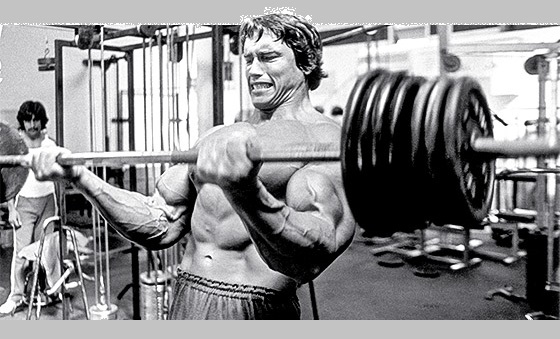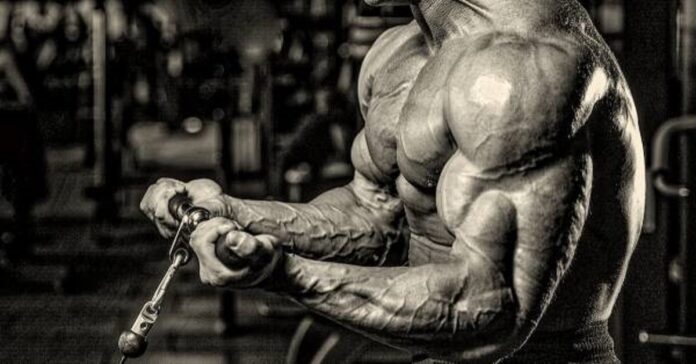Discussions and debates surrounding optimal training methods for muscle growth are usually dominated by the personal experience of a select few – whether it’s from leading online personalities or elite bodybuilders sharing their training styles – resulting in a follow-the-leader approach to training.

Let’s be honest, this is quite a natural approach. Most of us would take the words of advice from someone we look to emulate compared to someone we don’t. As such, we often look towards elite athletes for the holy grail of training methods and secrets.
It’s highly likely the successful athletes do indeed train in a very effective way, although we should also keep an open mind and continue to seek out tangible evidence so we can tune our own training. Simply, the reason behind a lot of elite bodybuilder’s success is patience, consistency and hard work. Their training is effective, not necessarily optimal, but this difference is dwarfed by all the other factors involved in high level bodybuilding.
With this in mind, in this article we look at which repetition range is optimal for muscle hypertrophy (growth). We will look at the various factors involved in encouraging hypertrophy and how they respond to repetition ranges to achieve an evidence-led approach to determining if a certain repetition range can be deemed optimal. You will soon see a clear pattern emerge.
A Brief Introduction to Hypertrophy
Muscle hypertrophy, in simple terms, is the growth and increase in size of muscle tissue. This is the growth of existing muscle fibres and not the creation of new muscle cells which is a different process called muscle hyperplasia.
Muscle hypertrophy can be categorised into two types; 1) sarcoplasmic hypertrophy – the increase in sarcoplasmic fluid resulting in an increase in muscle size but not necessarily a corresponding increase in muscular strength, and 2) myofibrillar hypertrophy – the increase in size of muscle myofibrils which results in some muscle growth as well as strength gains.
Anabolic Hormones and Lactic Acid’s Role in Muscle Hypertrophy
I am sure you have felt lactic acid build up before, a process often interpreted by many lifters as a barrier to completing a set to its full potential – a negative and useless bi-product of exercise. During the early stages of carbohydrate catabolism to fuel the energy needs of muscle contraction during moderate repetition weight training, the bi-product lactic acid is produced which can in turn lead to the excretion of powerful anabolic hormones¹. Lactate has been shown to lead to a higher level of both testosterone and growth hormone, a process that can also lead to the heightened levels of the very powerful hormone IFG-1.
Although this process has been shown to decrease with age somewhat², it is a strong argument for the use of moderate repetition weight training for inducing muscle hypertrophy, compared to lower repetition work. Lower repetition training has a more reduced surge of anabolic hormones due to the shift in energy source (phosphocreatine), resulting in less lactic acid build up.
Note: Some bodybuilders have even had success performing very high reps for muscle size.
Fast Twitch Fibres and Muscle Fibre Recruitment in Muscle Hypertrophy
It is commonly accepted that fast twitch fibres (particularly the red type IIA) possess more potential for growth, and therefore performing exercises that recruit these muscle fibres primarily will result in muscle hypertrophy to a greater degree. The faster twitch fibres contract quicker, have greater mitochondrial and capillary density, and have lower resistance to fatigue. Low to moderate repetition work with a challenging resistance will recruit these fibre types to the greatest degree.
The difference usually between low repetition training and moderate repetition weight training is that the moderate repetition training has a greater time under tension (TUT) which prolongs the cross bridge formation, this usually leads to greater muscle fibre damage to maximise the potential for muscle hypertrophy.
The Pump and Its Role in Muscle Hypertrophy
The pump is a term used to describe the increase in blood flow (and fluid build-up) to an exercised area causing the muscle to become full and tight. The pump is often believed to be a short lived egotistic aspect to training, resulting in a short period of time where a trained muscle swells in size. When we start to truly understand the process that is happening within the muscle during this time we may come to appreciate the pump a little more, and start to understand why the greats such as Arnold Schwarzenegger used to speak of the phenomenon so highly.
The pump feeling is caused due to myofibril hydration, a process that can greatly aid in protein synthesis, creating the ideal conditions for muscle growth. With arteries pumping blood into the working muscles, and the veins that take the blood out of the muscles collapsing, the result is blood plasma build up in the spaces between the muscle cells and blood vessels. This can surge to a level where the plasma seeps back into the muscle, resulting in the pump. This process happens with moderate repetition training, and is a process that many trainers will have felt. This process is much less pronounced in low repetition resistance training.
Summary
Above we have outlined the important factors affecting muscle hypertrophy. We have gone beyond the usual aspect which most associate with growth – mechanical stress, or in other words, the breakdown of muscle fibres from training.
For the majority, a moderate repetition range would be the best approach when seeking muscle hypertrophy. We would suggest between eight and twelve repetitions per set. This is in fact the repetition range which most bodybuilders have followed for a long time, although there has been a tendency recently to follow other protocols.
There will always be those who disagree and will continue to state that other repetition ranges, such as the 5 x 5 system (five sets of five reps) is superior for gains. This may be true for some, but we must also keep in mind that muscle hypertrophy is the goal of the bodybuilder and many equate “gains” with strength gains following a training protocol such as the 5 x 5 (which is much better suited to strength athletes).
With the above said, we must consider that everybody who trains will react differently to training stimuli, so it would be impossible to give a universal answer to the question of an optimal repetition range. What we can do however is look at studies, look at the processes of muscle hypertrophy, share personal experiences, and try to draw conclusions which will be true for the majority. Moderate repetition ranges appear to be that answer, but not everyone will agree. That’s what makes this topic much debated and interesting!








































